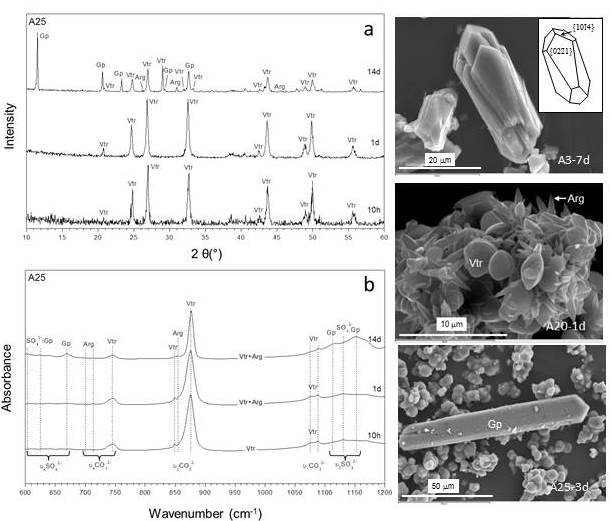In this work we aim to experimentally study the nucleation and growth of CaCO3 phases precipitated from supersaturated aqueous solutions in the presence of varying concentrations of sulphate oxyanion. The experiments were conducted under pH conditions close to neutral (7.6) and considering a wide range of initial (SO42-)/(CO32-) ratios (0 to ~ 68) in the aqueous solution. We paid special attention to the evolution of the precipitates during ageing within a time framework of 14 days. The mineralogy, morphology and composition of the precipitates were studied by X-ray diffraction, Fourier transform infrared spectroscopy, scanning electron microscopy and EDX microanalysis. The concentration of sulphate ions in the reacted aqueous solution was study by ICPs. The experimental results show that the mineral composition of the precipitate recovered in each run varied with the (SO42-)/(CO32-) ratio in the parental solution, which influences the mineral evolution of the precipitates during ageing. We observe that high concentrations of sulphate in the aqueous solution stabilize the vaterite precipitates and inhibit calcite formation. Furthermore, aragonite never precipitates directly form the solution and it is only formed via a dissolution-precipitation process in solutions with high (SO42-)/(CO32-) ratio after long reaction times. Finally, gypsum only precipitates after long ageing in those aqueous solutions with the highest concentration of sulphate. The reaction pathways during ageing, the morphology of the calcite crystals and the composition of vaterite and calcite are discussed considering both, kinetic and thermodynamic factors. These results show a considerably more complex behavior of the system than that observed in experiments conducted under higher pHs and supersaturation levels and lower (SO42-)/(CO32-) ratios in the aqueous phase.

